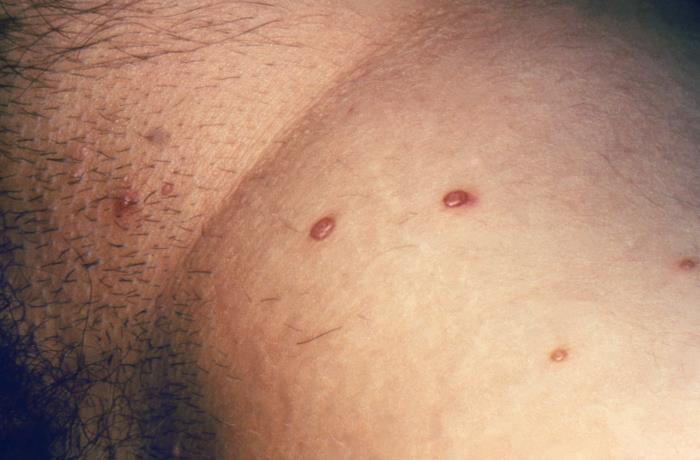Playlist
Show Playlist
Hide Playlist
Molluscum Contagiosum
-
Slides Virally-mediated Skin Lesions.pdf
-
Reference List Dermatology.pdf
-
Download Lecture Overview
00:01 Now having made the diagnosis, let's talk about the management. 00:05 Do nothing! Now, by nothing, I of course mean that we should provide reassurance and education for the patient and her parents. 00:13 These benign, asymptomatic lesions while perhaps a bit unsightly, will eventually resolve sponateously, even if it might take a few moths to do so. 00:22 There's one exception. 00:23 HIV-infected individuals can have molluscum contagiosum lesions that do not resolve and they're unlikely to resolve without any treatment. 00:32 So we have to treat them a little bit differently. 00:34 One additional point to emphasize to parents is that the culprit virus, this highly contagious molluscum contagiosum virus is transmitted via direct skin to skin contact, especially if you are to open up one of those lesions. 00:47 Even autoinoculation can occur where a child unroofs a lesion and contracts the virus elsewhere in the skin and they start to develop new lesions. 00:56 So it's really important to emphasize to patients and their families, do not open any lesions. 01:02 If you do feel like you need to treat the lesions or if they're in locations that are uncomfortable or particularly unsightly, you can use curettage, you can treat with topical cantharadin. 01:12 This is a treatment, a topical blistering agent sometimes used by dermatologist with questionable efficacy. 01:19 or you can actually use cryotherapy as well. 01:22 But if you can, just leave them well alone.
About the Lecture
The lecture Molluscum Contagiosum by Stephen Holt, MD, MS is from the course Skin Infections.
Included Quiz Questions
Which of the following measures is most effective in preventing molluscum contagiosum transmission?
- Avoiding direct skin-to-skin contact
- Wearing face masks
- Applying emollients
- Wearing gowns
- Vaccination against the molluscum contagiosum virus
Customer reviews
5,0 of 5 stars
| 5 Stars |
|
1 |
| 4 Stars |
|
0 |
| 3 Stars |
|
0 |
| 2 Stars |
|
0 |
| 1 Star |
|
0 |
This lecture was easy to follow and had good use of visual aids





